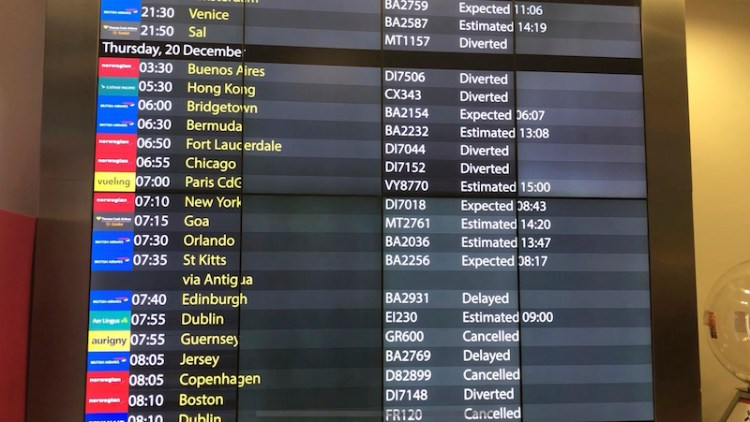Last week, London Gatwick, Britain’s second-busiest airport, had to be shut twice after unmanned aerial vehicles entered its airspace in what police called a “deliberate act.” Some 10,000 passengers were diverted, hundreds of flights were delayed and chaos reigned on the ground. The army had to be called in.
In Britain last year, drone incidents involving aircraft rose to 93, from 71 in 2016. Cases like Gatwick, involving the closure of a commercial airport, are still rare, but that could easily change. As the world grapples with the drone phenomenon, for better and worse, a few principles are worth keeping in mind.
One is that rules help. Britain has already enacted some sensible restrictions, including prohibiting drones from flying above 400 feet or near airports. Owners of big drones will soon have to register them and complete a safety test. Although imperfect, this is the right way to get the attention of careless hobbyists: Violations can result in fines or jail time.
Those intent on serious harm – as the Gatwick perpetrators seemed to be – make for a harder problem. But here, a second principle is useful: Focus on technology, as the market is already doing. Experiments in drone defense have ranged from low-tech (birds, nets) to futuristic (lasers, more drones). In recent years, the U.K. has used radio jamming to prevent drones from delivering drugs to prison inmates.
All these approaches have their flaws. And as threats evolve, it’s likely that some combination will be needed. But airports and other sensitive sites will need to invest in such defenses. Governments should be willing to help. And the traveling public should prepare for a rocky few years ahead.
Send questions/comments to the editors.



Success. Please wait for the page to reload. If the page does not reload within 5 seconds, please refresh the page.
Enter your email and password to access comments.
Hi, to comment on stories you must . This profile is in addition to your subscription and website login.
Already have a commenting profile? .
Invalid username/password.
Please check your email to confirm and complete your registration.
Only subscribers are eligible to post comments. Please subscribe or login first for digital access. Here’s why.
Use the form below to reset your password. When you've submitted your account email, we will send an email with a reset code.